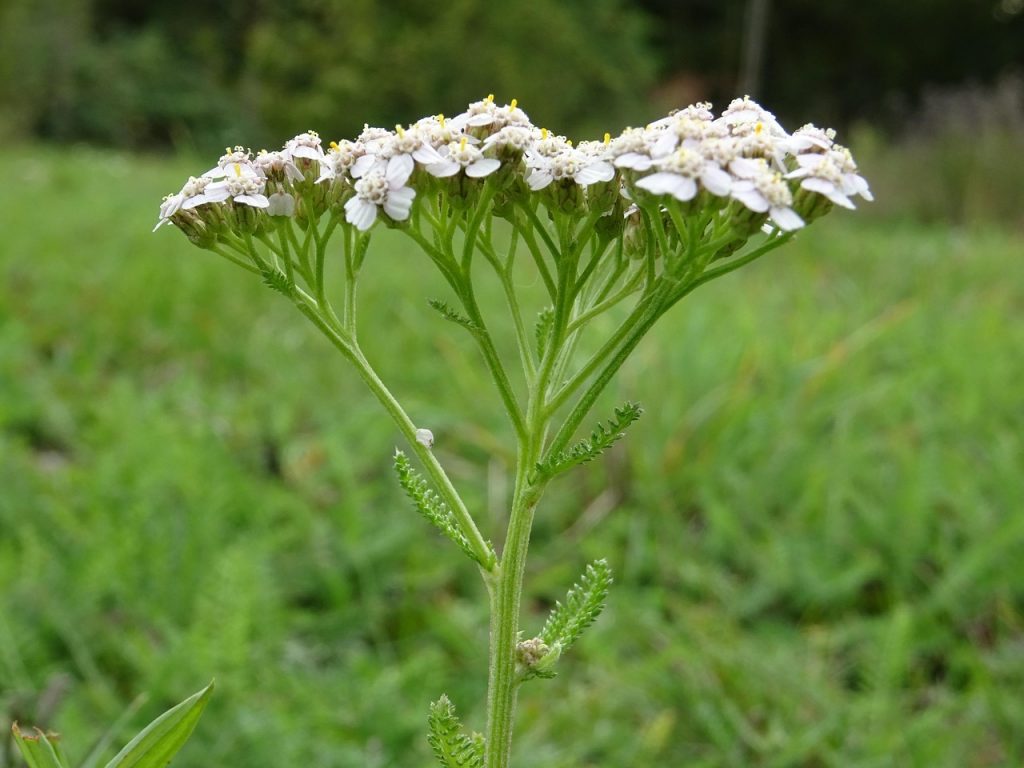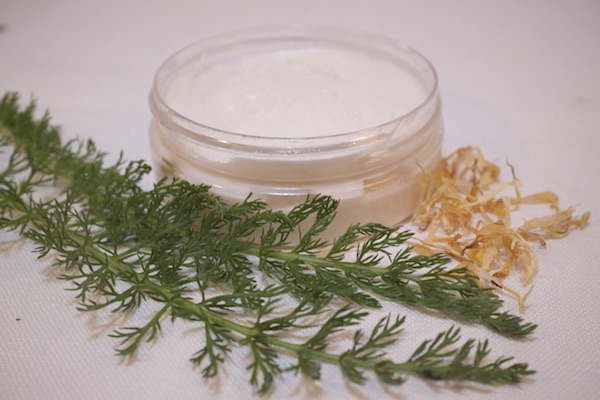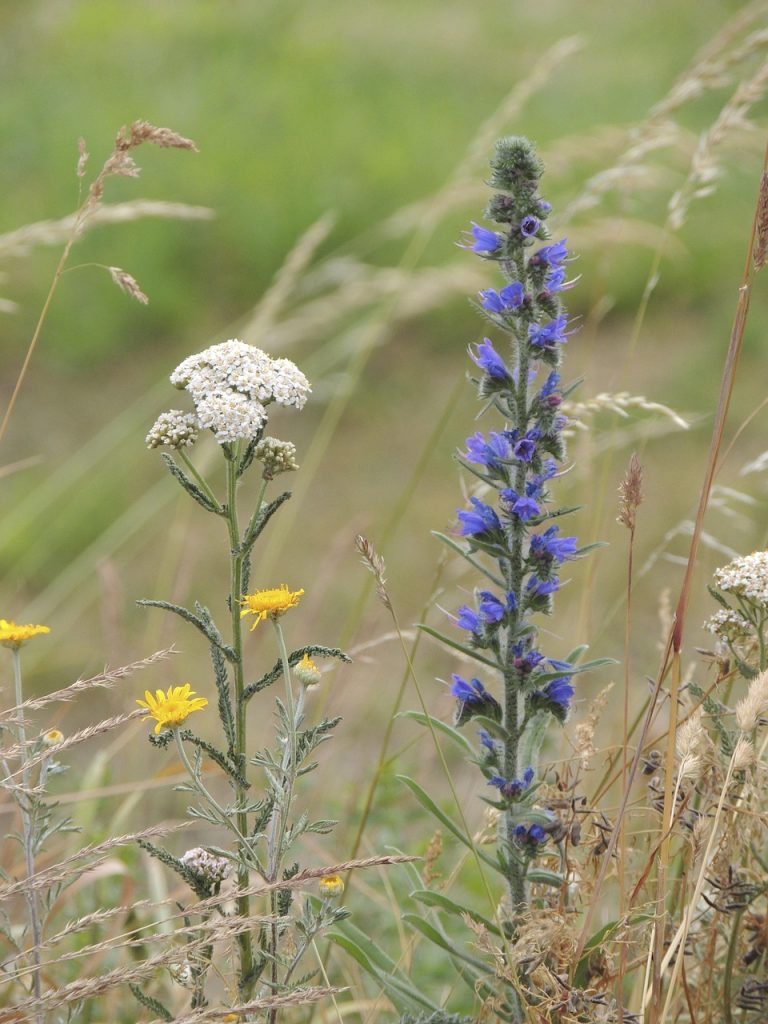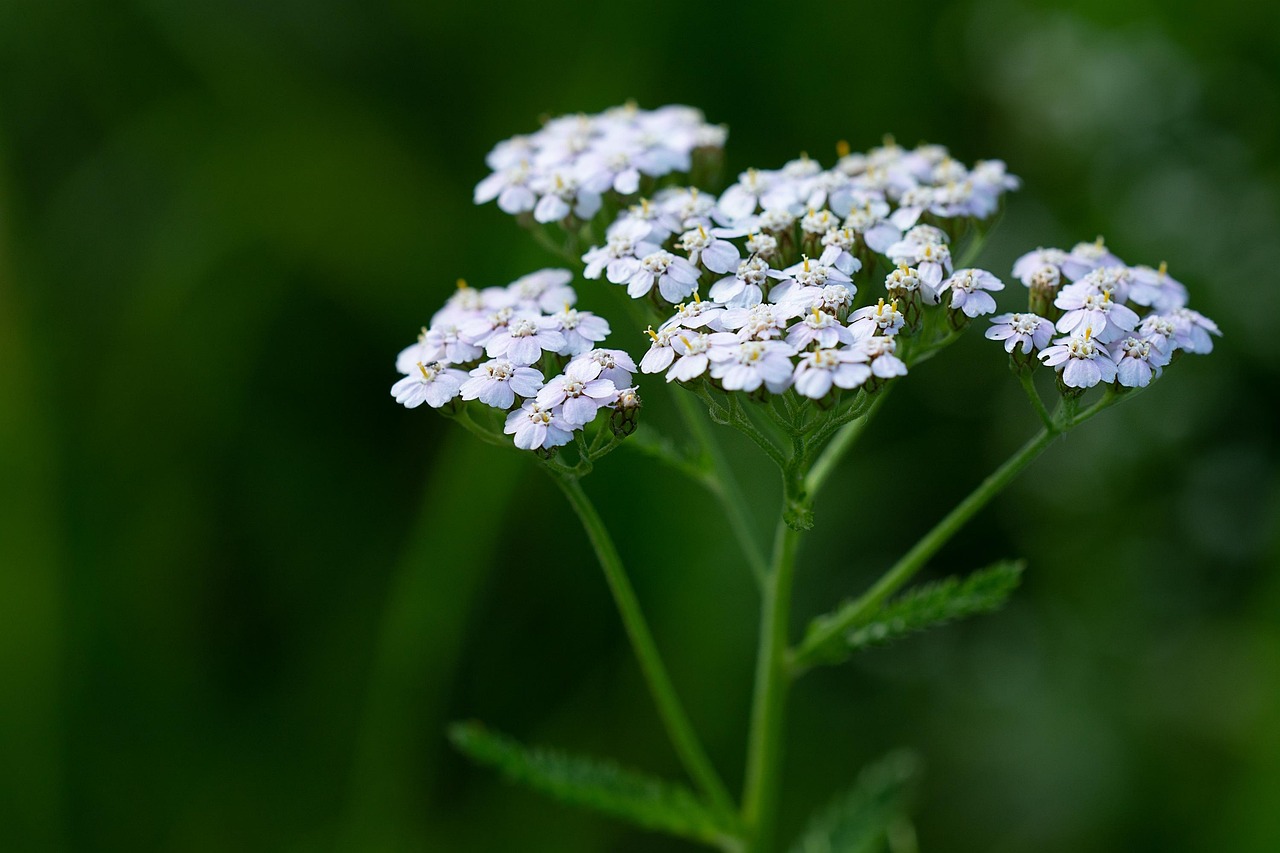Gardens, fields and hedgerows always look a little straggly by late summer. Conditioned from an early age to start anew in September, we seek out freshness, bright sparks, inspiration.
Among the yellowed grass and withered stalks, one summer plant still shines with its white frothy tops and feathery leaves, yarrow. With luck, she’ll be flowering well into the autumn.
Yarrow is relatively drought tolerant, her leaves may be a little smaller when water is scarce but, growing from underground rhizomes, even this dry summer should not have troubled her long term. A plant of Venus, yarrow is associated with balance and harmony, a good plant ally to help us segue from the joyous spirit of summer’s chaotic jumble into the more orderly rigour of term time agendas.

Staunchly heroic
Yarrow’s latin name, Achillea millefolium, is taken from the Greek hero Achilles, leader in the Trojan wars. He is said to have used the plant to heal his soldiers’ wounds. Yarrow is also noted as an important herb used by soldiers during the American Civil War. Yarrow is styptic, meaning it stops bleeding, so is often traditionally deployed against cuts and even deep or internal wounds. It would, indeed, have proved very useful on the battlefield. It is this power that earns yarrow some of her common names, such as Herb militaris, the military herb, knights’ milfoil, bloodwort, staunchwort, soldier’s woundwort and nosebleed.
- A simple yarrow powder can be made by drying yarrow leaves and grinding them to a powder. Keep this in an airtight jar for use directly, or mixed with a little oil or water to apply more easily to a wound.
- Oil infused with yarrow can be used directly, or combined with beeswax to make a salve or blended with other herbs into a restorative cream.

Spiritually connected
Her supportive powers go back way before even Greek myths. Archaeological evidence from sixty-thousand-year-old graves shows yarrow was one of the first funerary herbs. Still today, some consider her to have magical powers of helping us see the unseen, anchoring us in reality while opening up lines of communication beyond the living. Yarrow is used in divination in many parts of the world.
Strongly anchored
If you’re tempted to gather a few yarrow sprigs, you may be surprised by her strength. Yarrow stems do not easily break, you will need secateurs. The whole plant can be used (leaves, flowers and stem) but by cutting above a leaf node the plant will recover better and potentially reflower. The strongest tinctures are said to be made from plants harvested before flowering, so a sunny day in late spring is ideal, but some prefer to use the white flowers for tinctures and yarrow has her uses all year round.

Supportive ally
She is particularly good to have to hand in cold and flu season. EYP tea combines mucus-busting elderflower and sinus-clearing peppermint with anti-inflammatory yarrow. A steaming cup is recommended whenever a sore throat or sniffle threatens.
She’ll also combine well with elderberry, limeflower, chamomile and mint.
As an astringent herb, yarrow’s use in skincare is as a toner and skin tightener, helping against wrinkles. Create a simple infusion using boiling water or distil her hydrosol. A facial steam or face pack with yarrow can be firming. Adding yarrow to a bath can envelop you in her protective forcefield.
Super protective
Yarrow is a super-protective and healing herb. Her well-rounded presence means she combines with other herbs harmonising the whole. She is a reminder to protect ourselves and a support in finding our inherent strength.

Leave a Reply to Chris Cancel reply